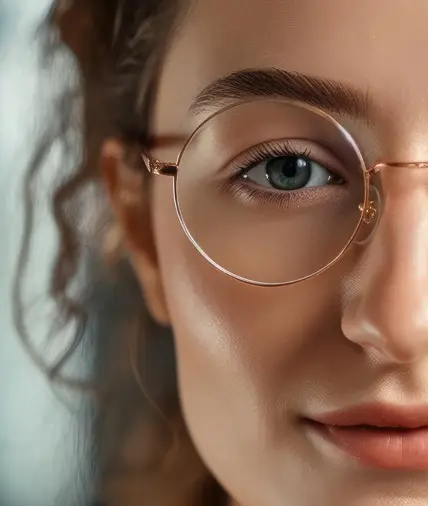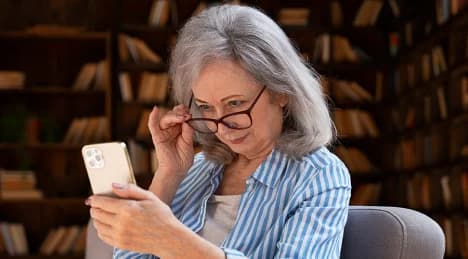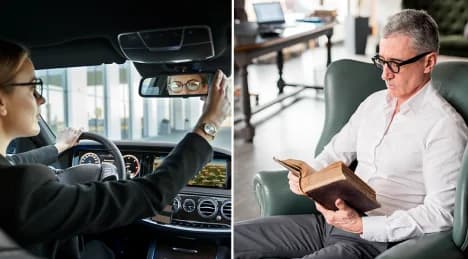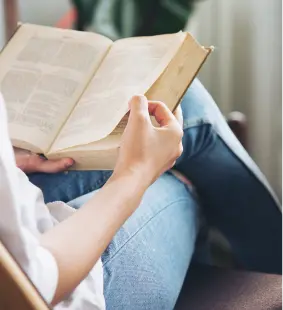
Varifocal Lenses
Digitally Combined correction ofNear & Far Sightedness
What are Varifocal Glasses?
Varifocal glasses have advanced digital lenses that help in the simultaneous correction of near and far-sightedness. These glasses offer combined correction of distance, intermediate and reading prescription, so you no longer need to switch between multiple pairs.

“Specscart Varifocals are best-in-class in the industry with maximum user satisfaction and adaptation.”
How do varifocals work?
How do varifocals work?
Unlike single-vision lenses with the same prescription power in the entire lens, varifocals have different powers which gradually change from top to bottom (distance to reading) without any unwanted lines or markings on the lenses.
Whether you buy varifocals online or from physical stores, they all have ‘soft focus’ areas on the outer edges of the lenses, which create slight visual distortion. But our newly designed Varifocal lenses—which are based on Digital RayPath® Technology with the widest field of view and minimum soft focus area.
How do you know when you need varifocal glasses?
In most cases, for existing glasses wearers after the age of 40 - You may develop another reading prescription as the eye muscles get weak. You will notice that you need a separate pair of reading glasses to focus on small prints or while using mobile devices. This is a sign that you may need varifocal glasses which can be confirmed with your optometrist.

Presbyopia
Presbyopia is a condition that causes the natural loss of the ability to focus on nearby objects. You may notice this when reading small print or using your phone. If you find yourself holding items further away to focus, varifocal glasses can help. They seamlessly correct your vision for both near and far distances and eliminate the need for separate reading glasses.

Multiple Prescriptions
If you need a separate pair of glasses for reading, driving, or everyday activities, varifocal lenses are a great solution. Instead of constantly switching between glasses, varifocals provide a smooth transition between multiple prescriptions in a single lens. This allows you to see clearly at varying distances— whether you’re reading, working on a computer, or looking far away—without needing to change your glasses.
How does Specscart make a difference with varifocal lenses?
There are multiple varifocal lenses available in the market starting from a reasonable budget and more advanced ones costing upwards of £200.
Keeping our promise, we only bring the best eyewear experience for the Specscart family. Why keep you on the outdated technology in the fast-evolving world? Even our base varifocal lens is far ahead of the competitors as it brings the latest Digital RayPath® Technology which is more advanced than the traditional Free-form technology that you see in budget varifocals and even some expensive varifocal lenses.
Here is what comes standard with all our varifocal lenses:
Tailor-made for your individual vision needs.
Seamless transition between different viewing distances.
Based on the latest Digital RayPath® Technology.
Faster adaptation compared to traditional varifocals.
Types of Varifocal Lenses at Specscart.
We have brought a range of premium varifocal lenses to suit the changing modern lifestyle and offer the best vision experience to the Specscart family.
Innovator 4D £109 £84
Patented Digital Ray-Path® Technology
More advanced than Freeform Varifocals
Customised precision
Wider field of vision
Aesthetic design
Improved digital vision for a modern connected lifestyle
Advanced Digi-Contour Technology for better performance
Aberration Filter System 2.0 for better peripheral vision
Ultra-high-definition natural vision
Widest field of Vision
Thinner lens design for better aesthetics
Superior stable vision for long hours of driving or sports
Introducing our latest Ultra HD Varifocals
How to Buy Glasses with Thin Lenses?

01
Select the Glasses of your choice. Then click ‘Buy & Select Lenses‘.
02
Select your Vision Type: Choose the Varifocal lenses option and select from Innovator 4D, Innovator UHD, or Zeiss SmartLife Plus Varifocals based on your vision needs.
03
Select Lens Coating like clear, light-adaptive, or sunglasses tint depending on your lifestyle needs with Transitions Lenses.
04
Choose from lens package options depending on your prescription strength.
05
Upload your prescription, add shipping details and make the payment.
How Does The Customisation Process Work?
Step 1

Once you have bought your favourite glasses, we‘ll send you a sample pair in our “vari-trial” box, with an instruction manual & prepaid returns label.
Step 2

Now the fun starts - Take a selfie while wearing the glasses and email it to us.
Step 3

We'll customise your glasses according to your individual field of vision.
Specscart Varifocals Are Designed For An Active Modern Way Of Life

Varifocal Glasses
For Reading

Varifocal Glasses
For Office

Varifocal Glasses
For Driving

Varifocal Glasses
For Sports
FAQs
Bifocal vs varifocal - what's the difference?
Bifocal lenses are old - they have a visible line that separates reading and distance glasses. Varifocals are advanced digital lenses. They’re suitable as your reading, intermediate and distance glasses. There are no visible lines on varifocal lenses offering a smoother transition between different viewing distances.
What are the common issues faced with varifocal glasses?
It takes time to get used to varifocal glasses or progressive lenses. People generally feel difficulty focusing on things. Often they feel dizzy and experience slight headaches initially. But once the eyes get used to new lenses, there’s nothing better than a pair of varifocals for your vision!
What is the Returns policy on Varifocals?
We offer a 60-day no-questions-asked Returns Policy on every pair of varifocals sold at Specscart.
How long will it take to get used to varifocal lenses?
It takes around 14 days to get used to every new pair of glasses. However, in the case of varifocals, it can take up to 4 weeks. This is because varifocal or progressive lenses are digital lenses and your eyes take time to understand them. A good way to get used to varifocals is to point your nose where you have to focus or concentrate. For eg. While driving if you need to look through the rearview mirror, try to turn your head slightly towards the mirror, instead of moving your eyes. Similarly, for reading, try to keep your chin slightly upwards and look through the reading portion of the lenses while reading. At the end of the 4 weeks, you will be a pro at using your new varifocals. You can also contact our optician for help at +44(0)1613125767.
Do varifocals come with UV coating?
All glasses including Varifocals at Specscart come with free anti-glare, anti-UV, anti-scratch, and impact-resistant coatings.
Can I choose reactor lights or Transitions with varifocals?
Yes, you can customise your varifocals with a light-adaptive coating in the “Lens Coating” section by selecting Transitions lenses.
Do you provide varifocals with rimless glasses?
Yes, we glaze varifocal lenses in all types of frames including rimless frames.
What are some common myths about Varifocal lenses?
Here are some of the common myths about varifocal lenses: They're expensive: Varifocal lenses are cost-effective as they eliminate the need for different pairs of glasses to correct your vision for different distances. They're not good for driving: Modern varifocals are designed for driving as they offer a wider field of vision. They're thick and noticeable: Modern varifocal lenses at Specscart are thin with no visible lines.
What are the disadvantages of varifocals?
While varifocals are highly convenient for providing clear vision at all distances, some users may experience an adjustment period. This can include minor distortion or blurriness at the edges of the lenses. However, with consistent use, most people quickly adapt and enjoy the seamless transition between different focal lengths. Additionally, modern varifocal lenses are designed to minimise these effects, ensuring a comfortable and effective vision solution.


















































































































